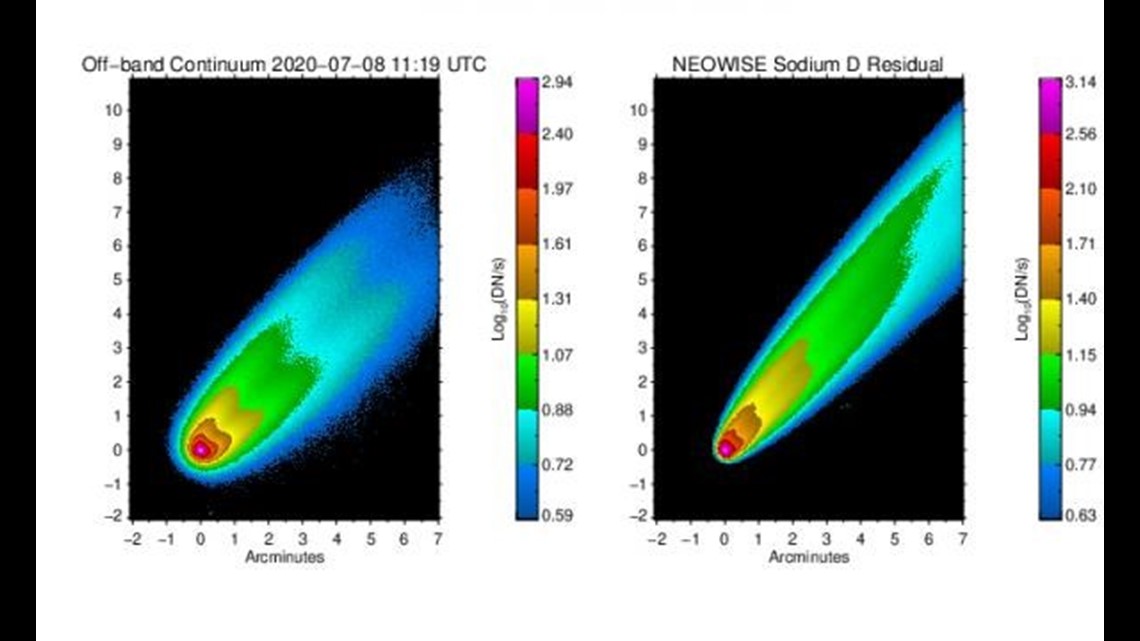BUFFALO, N.Y. — Not only did NEOWISE provide a spectacle for skywatchers across the Northern Hemisphere, scientists used this opportunity to further examine the chemical makeup and behavior of the centuries old comet.
Comet NEOWISE could be one of the oldest and brightest comets in our solar system. It began to approach the sun in its elliptical orbit for the first time in over 4,500 years. The comet was first discovered on March 27th by NASA's Near-Earth Object Wide-field Infrared Survey Explorer, hence its name/acronym. And this comet wont be visible in the Earth sky for another 6,800 years, so several fields used this opportunity to study these space giants.
In a recent study funded by the National Science Foundation, scientists Jeffrey Morgenthaler and Carl Schmidt used satellite imagery to capture NEOWISE to study its chemical makeup. Specially, its tail.
Only the largest comets in our solar system can produce such visible dust tails. They're created when frozen particles trapped in ice on the comet change from a solid to gas (sublimation) from the heat of the sun. These gas particles then get dragged behind the comet in it's gravitational pull, creating it's tail.
In Morgenthaler and Schmidt's study, they used satellite imagery to decipher the chemical makeup of NEOWISE's tail (below). The image on the left is a composite of all the cometary dust that reflects light. The image on the right shows light only emitted by sodium ions. This means NEOWISE's tail is primarily made up of sodium ions.


The importance of the discovery of a sodium tail is crucial. Only the brightest comets in our solar system have such tails and are rarely seen.
Plus, it allows scientists to further examine what chemical reactions and processes that could be occurring near the surface of the comet. This could lead to discoveries of understanding of a comet's speed, trajectory, lifespan and creation.
Morgenthaler and Schmidt now plan on using these images of NEOWISE to computer model the comet's tail.
It's likely within the next several months and even years new studies will be published after NEOWISE streaked across our sky this past July.



